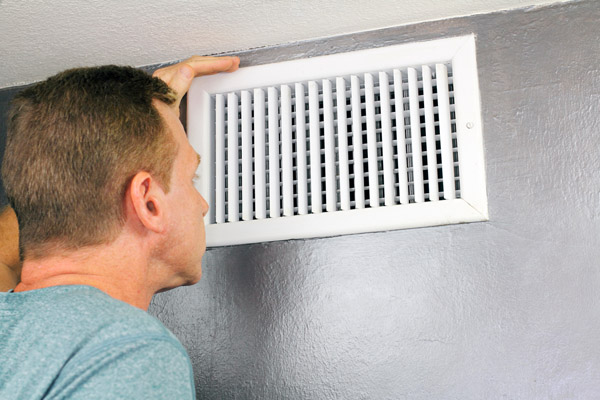
Understanding The Importance of Airflow in Your Ductwork: HVAC Headaches? Kinks in Your Ducts Might Be to Blame.
Is your HVAC system acting out? Uneven temperatures, rising energy bills, and strange whooshing sounds could all be pointing to a hidden culprit: kinked ducts. These gnarled air pathways, bent by accident or time, disrupt the smooth flow of your home’s vital breath. But fear not, fellow comfort seeker! Here’s why kinks are a bummer, and how to straighten out your system for blissful indoor harmony:
The Kinked Culprit:
Imagine a highway for air, suddenly turned into a winding backroad. Kinks restrict airflow, causing:
•Reduced Efficiency: Your hardworking HVAC system strains to push air through these roadblocks, wasting energy and money.
• Uneven Comfort: Forget that Goldilocks feeling. Kinks lead to hot and cold spots, turning your home into a climate roller coaster.
• System Strain: Like a car stuck in mud, your HVAC overexerts itself, shortening its lifespan and leading to costly repairs.
Unknotting the Problem:
Don’t suffer in silence! Tackle those kinks with these options:
• Call in the Duct Detectives: Professional HVAC technicians can diagnose and fix kinks, often by simply straightening or resizing the affected area.
• DIY Duct Detox: For minor kinks, carefully reshape the ductwork yourself. Remember, safety first!
• Replace the Roadblock: In severe cases, replacing the damaged section might be the most efficient solution.
Prevention is Key:
Keep your airflow flowing freely with these proactive tips:
• Installation A-Team: During construction or renovations, ensure proper ductwork installation to avoid future kinks.
• Regular Duct Checkups: Inspect your ducts periodically for signs of wear or tear. Think of it as a wellness check for your home’s breathing system.
• Clear the Way: Keep furniture and other objects away from ducts to prevent external pressure build-up.
• Attic Acrobats Beware: Ensure attic work, like wiring or insulation, doesn’t interfere with your ductwork’s smooth sailing.
HVAC Headaches? Kinks in Your Ducts Might Be to Blame- The Takeaway:
Don’t let kinks dim your home’s happy glow. By understanding their impact and taking action, you’ll ensure your HVAC system runs smoothly, your wallet stays happy, and your comfort reigns supreme. Remember, unrestricted airflow is the silent symphony of a well-functioning home!
Unclog Your Comfort: Kinked Ducts & How to Fix Them
Identifying kinks in your ductwork can be difficult, as they are often hidden behind walls or in hard-to-reach areas. However, there are some signs that may indicate the presence of kinks, such as reduced airflow, whistling or banging noises coming from your ducts, or noticeable temperature inconsistencies throughout your home.
If you suspect that you have kinks in your ductwork, it is recommended to enlist the help of a professional HVAC technician. They have the knowledge and tools necessary to locate and repair any kinks, ensuring that your system operates at optimal efficiency.
Consequences of Kinked Ducts:
Kinks in your ductwork not only hinder airflow, but they can also contribute to other problems within your HVAC system. Restricted airflow can put additional strain on your equipment, potentially leading to premature system failure or expensive repairs. It can also lead to poor indoor air quality, as stagnant air can become a breeding ground for bacteria, mold, and allergens.
1. Reduced Efficiency: Kinks disrupt the smooth flow of air, causing turbulence and reducing the efficiency of your HVAC system. This often results in uneven heating or cooling throughout your home.
2. Increased Energy Consumption: The extra effort required to push air through kinked ducts puts a strain on your system, leading to higher energy consumption. This not only impacts your wallet but also contributes to unnecessary environmental strain.
3. System Strain and Wear: The increased workload on your HVAC system due to kinks can lead to premature wear and tear, potentially shortening the lifespan of the equipment.
Addressing the Issue:
If you notice kinks or restrictions in your ductwork, it’s crucial to address them promptly. Consider consulting with a professional HVAC technician to assess and rectify the problem. They may recommend solutions such as duct straightening, resizing, or even replacement if the damage is severe as sometimes a kink can become permanent even after the cause is removed.
Preventing Future Issues:
To maintain optimal airflow and prevent future problems:
• Ensure proper installation of ductwork during construction or renovations.
• Periodically inspect your ducts for any signs of damage or restrictions.
• Keep the area around ducts clear to avoid external pressure.
• Ensure any work done in the attic does not interfere with ductwork, wires and cables should not rest on ductwork.
Conclusion:
Silent Saboteurs: Why Kinked Ducts Drain Your Wallet and Home Harmony Airflow is the unsung hero of our HVAC systems, and kinks in ductwork can be its silent saboteur. Understanding the importance of maintaining smooth, unrestricted airflow is crucial for the efficiency and longevity of your HVAC system. By addressing kinks promptly and adopting preventive measures, you’ll ensure that your home remains a haven of comfort while keeping energy costs in check.
